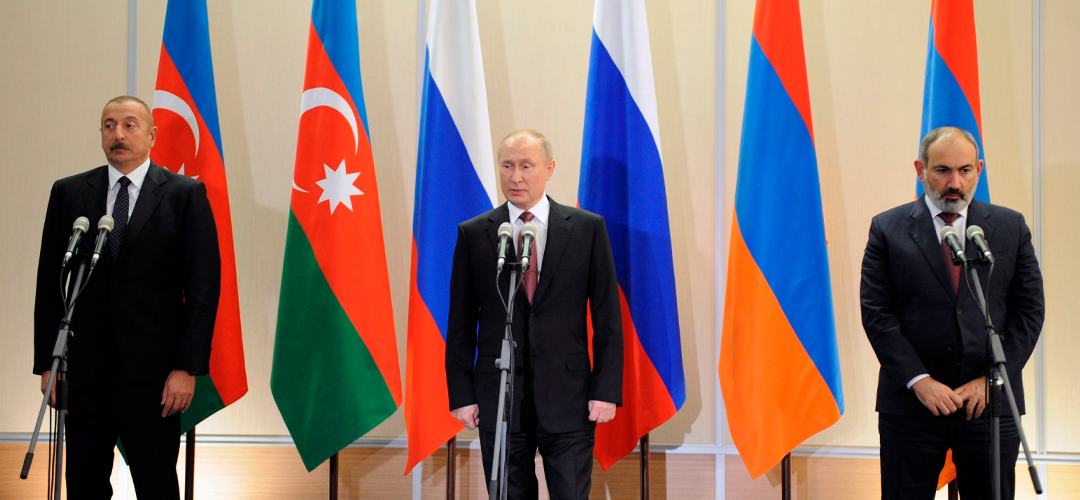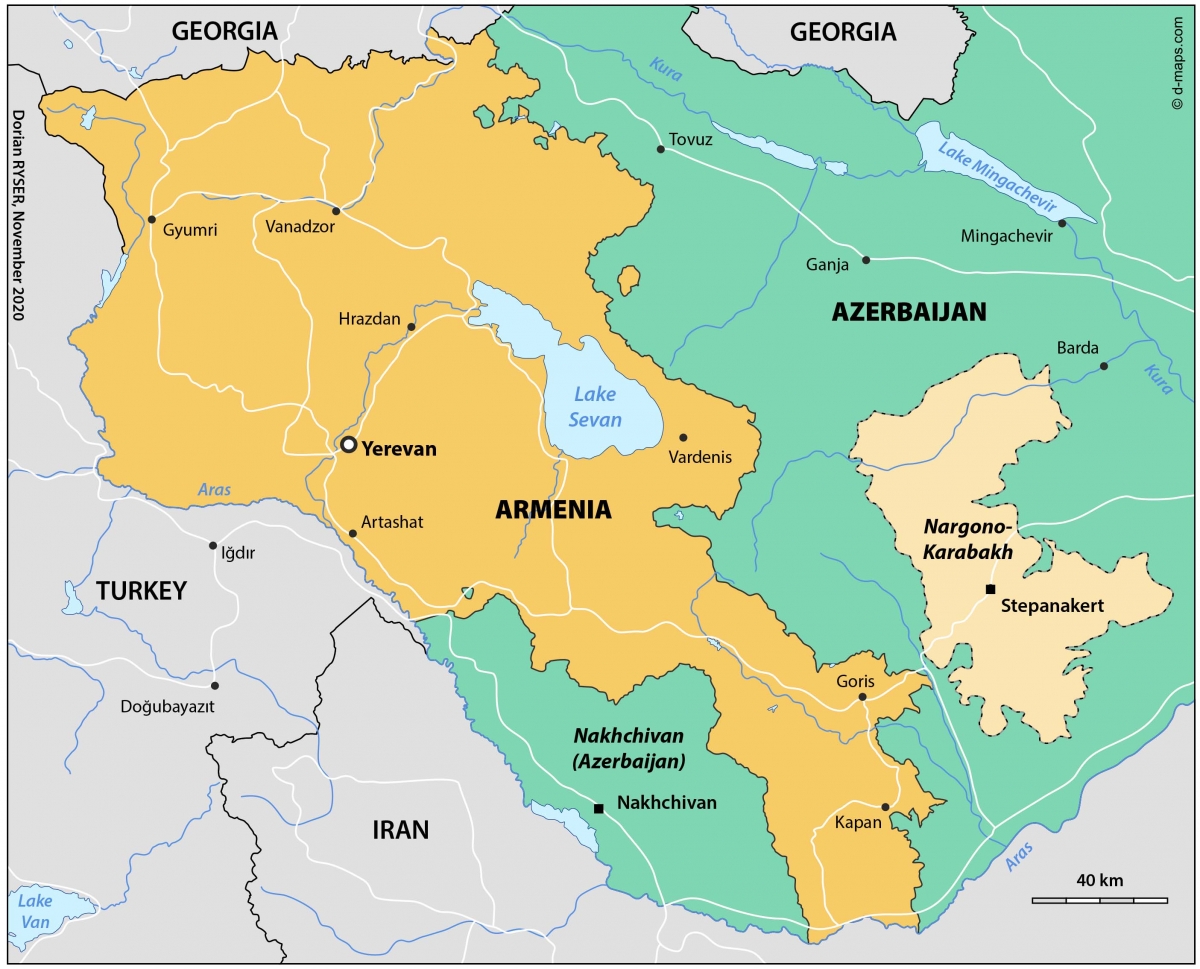Nagorno Karabakh-averting Another Round
December 31, 2022 | Expert Insights

Tucked in a remote corner of the South Caucasus between Azerbaijan (whose part it is internationally recognised) and Armenia (to whom it is closely linked in every way, including the sole land corridor), Nagorno-Karabakh (also referred to as the self-proclaimed Republic of Artsakh) remains on the most intractable trouble spots in the world. Since the intense fighting in 2020, an uneasy calm has prevailed over the region, but now the situation is again turning ugly, with a conflict hovering on the horizon.
The current standoff started in early December when Azerbaijan civilians (with the official backing, of course) blocked the solitary road connecting Armenian-dominated areas of Nagorno-Karabakh through the strategic Lachin corridor. As a result, all supplies to over 100,000 ethnic Armenians were cut off, including trade, food and medicines. The U.S. Agency for International Development (USAID) has warned that the blockade could “cause a significant humanitarian crisis.” In fact, like the rest of Europe, Armenians in Nagorno Karabakh face the spectre of a deadly winter with all gas supplies choked off by Azerbaijan.
Background
The 2020 fighting, now termed the Second Nagorno-Karabakh War, was an unmitigated success for Azerbaijan. Buttressed by Turkish armed drones and a reinvigorated military, Azerbaijan was able to recapture territories that Armenia had occupied since the first war of 1994 in a well-conducted 44 days campaign. However, a total military success still excluded Azerbaijan, which has maintained direct and indirect pressure to force the stalemate in its favour during the last two years.
Legally a part of Azerbaijan, Baku has struggled for the last three decades to reassert its ownership over the enclave but has been successfully thwarted by Armenia. With Russia caught in the quagmire of Ukraine and its economy battered by a slew of sanctions, this is an opportunity that Baku would loathe to let go of. This has been evident since the beginning of 2022, when increasingly Baku started moving to resolve the issue by force while concurrently allowing discussions. Baku has introduced a new element to the conflict by involving civilians on both sides. Evidently, Baku is determined to construct a solution on its terms.

Analysis
Both the EU and Russia are involved in the ongoing peace talks, but Azerbaijan is now losing patience with the slow pace of negotiations; For Armenia, a stalemate is a victory. However, with a weakened Moscow losing face internationally, its will to enforce the cease-fire in the disputed region is fast diminishing. Since September this year, the Azerbaijani military has been ratcheting up the military pressure through armed incursions into Armenian-controlled areas, even as peace talks between President Ilham Aliyev of Azerbaijan and Prime Minister Nikol Pashinyan drag on in Brussels.
On their part, the Armenians, too, have a legitimate concern. Having suffered genocide and ethnic cleansing, with millions killed by Turkey in the aftermath of its defeat in World War I, there is a real apprehension in Yerevan that there may be a repeat in Nagorno Karabakh. In the absence of strong security protocols guaranteed by world powers, any reconciliation and integration of Nagorno Karabakh with Azerbaijan could be fatal for the Armenian ethnic population of the enclave. In any case, Baku has a poor record of ensuring its citizens' human rights. The Armenians fear that they would fare no better and, at best, end up as third-class citizens corralled into ghettos if not outrightly murdered with their women raped. Unless a water-tight guarantee can be extended to the ethnic Armenians residing in the enclave, Armenia will continue to wage the military struggle.
President Aliyev is exerting pressure on Armenia to strengthen his negotiating position on different fronts. He has now publicly demanded a slice of territory across central Armenia as a corridor linking Azerbaijan to its enclave of Nakhichevan and its ally Turkey.
In this mix, another volatile element getting involved is Iran, which is eager to fill the Russian vacuum in the South Caucasus. In October, the Islamic Revolutionary Guards Corp (IRGC) launched large-scale military exercises along the Iran-Azerbaijan border near the Nakhchivan enclave. Tensions between Tehran and Baku have risen since the Second Nagorno Karabakh War when Iran threatened military intervention if the Zangezur Corridor was cut connecting Iran with Armenia. The latest military manoeuvres are a message to Baku, whose increasing closeness to Israel is causing worries in Tehran. With Ankara already a major player in the Caucasus, with the demise of Russian influence in the region, Teheran would not like Tel Aviv to open a fresh anti-Iran front through Azerbaijan.
Assessment
- The military equilibrium maintaining a kind of peace in Nagorno-Karabakh is fast breaking down and will only worsen if left by itself. Major world powers must arrest the decline by an active intervention to ensure no side gains an unfair advantage with the vanquished, especially its innocent citizens facing the wrath of the victors.
- Russian decline is creating space for external powers like Iran, Turkey and even Israel to meddle with consequences that could be far-reaching. Multilateral organisations with the backing of the U.S. and EU, along with the rising powers of Asia Pacific, must get involved at the earliest to seek a peaceful and equitable solution to the Nagorno Karabakh mess.
- Using a combination of soft and hard power, the West must leverage the unspent capital it still enjoys in the South Caucasus to bring the warring sides to agree to a just, final and lasting solution.








Comments